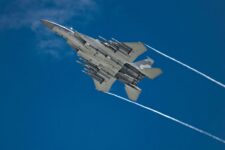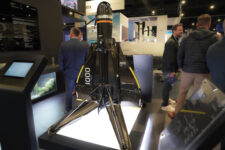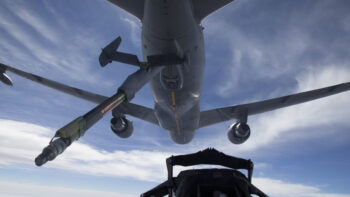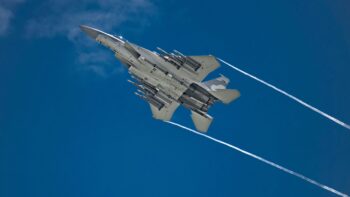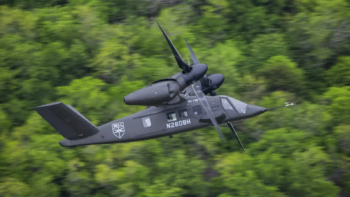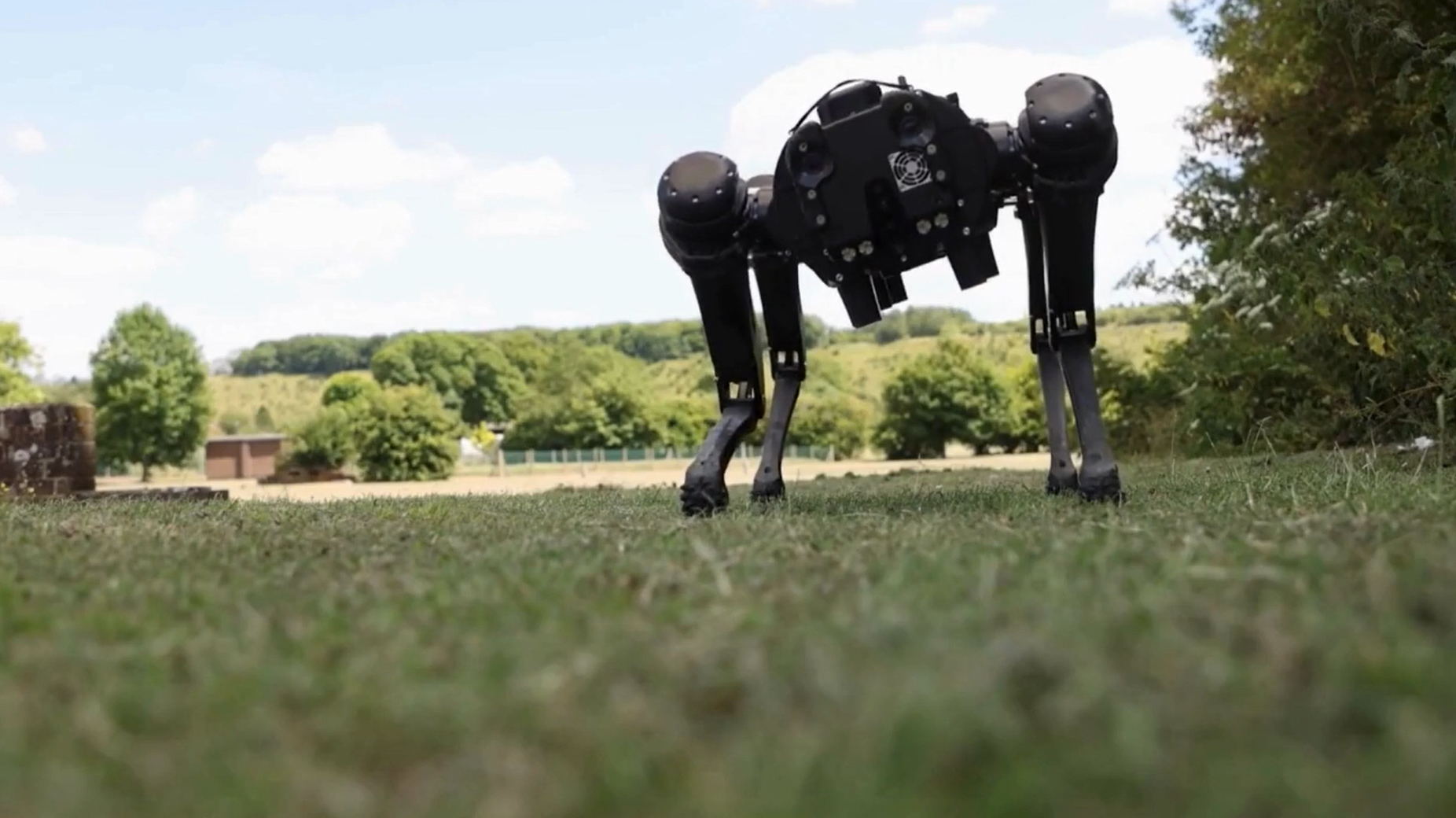
A four-legged robot mugs for the camera in a video on the website for Australian robotics firm Breaker. (Screengrab via Breaker)
LANDFORCES 2024 — In a room full of large ground vehicles, the small box — roughly the size of a thick deck of cards — showed off by Australian startup Breaker doesn’t stand out.
But, the company says, this little box is chock full of artificial intelligence algorithms that can be easily integrated onto a variety of unmanned platforms for a wide range of mission sets.
“We build robots that act like humans. We want them to make it as easy as possible to control multiple autonomous systems across multiple domains,” co-founder Matthew Buffa told Breaking Defense at their tiny boothlet at the biennial Land Forces conference, echoing the firm’s website which features a video of a medium-sized, four-legged robot.
The company, which has been partially financed and assisted by the University of New South Wales’ Founders Defence 10x accelerator program, made its first appearance at Land Forces this year and has attracted a steady stream of the curious and intrigued. Buffa claims the company already has a defense customer, whom he would only describe as a foreign special forces organization that “bought a number of our systems.”
The box, which Buffa called an “autonomy stack,” incorporates six different AI models that can be put into “any autonomous platform.” He compared the effects of their box as similar to the Star Wars robot R2D2, who helps Luke Skywalker pilot and target and shoot, instead of just providing him with reams of information he must decide on.
That natural two-way communication between an operator and a drone is the key of what the company hopes to get at. As Buffa noted, “When you’re under high cognitive load and high stress response, humans naturally tend to do voice.”
That’s a heavy cognitive load if a soldier on a ridge line is trying to control multiple drones. But Breaker’s system, according to Buffa, is designed to have the operator designate a single drone as the leader, have that drone coordinate with the other sensors, and then have that drone come back for final instructions.
For instance, picture a soldier on one side of a ridge line. That soldier gets on the radio and designates one drone the “commander” of the other 10 drones in a swam.
“Drones will then aggregate all the sensors across all 10 platforms, and if they find something interesting, say it’s a supply truck or a vehicle full of operators with weapons, it will inform the operator, we’ve found a vehicle full of operators with weapons this distance, this bearing from your current location,” Buffa explained. “Would you like me to follow them?”
Before deploying the company tries to train the AIs on as many mission types and threats as possible. When they are deployed, he said they “brief the drones, just like any operators for a mission. They get given the brief of what they’re supposed to be doing, and where they’re going and any information. We literally give the same information as natural language text, if it’s a document or a photo or scan of a document, to the drones. They then use that information to make those smart decisions.”
The drone will decide if, say, an abandoned car near a road appears to be a threat or not. If it decides it’s not then it wouldn’t “bother the operator.
“The operator is doing something important. I’m (the drone) not going to go on the radio and tell him about this random car I’ve seen, which is what autonomous systems do right now.”
Buffa adds that offloading the command structure more to an unmanned system should limit the number of human forces needed in the field, which is important given what has been seen on the battlefields of Ukraine, where the RF signals going off drone operators can be traced for a counter-strike by an enemy.
“The issues we saw was that, for every one autonomous system you wanted to play on the field, there’s almost always at least one person who has to carry a lot of equipment, [and] it has to be very loud on the RF spectrum, so these types of systems are just failing in situations such as Ukraine.
“I mean, if you rely on continuous data and continuous video, and that is the fundamental requirement for your autonomy to exist, the minute it goes out, the systems are not helpful.”










